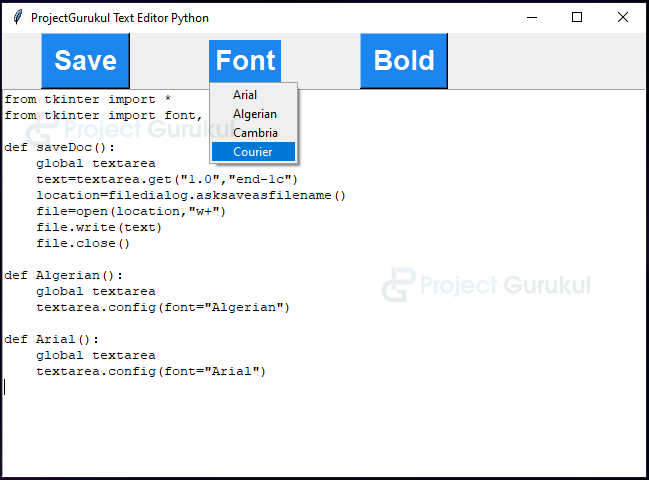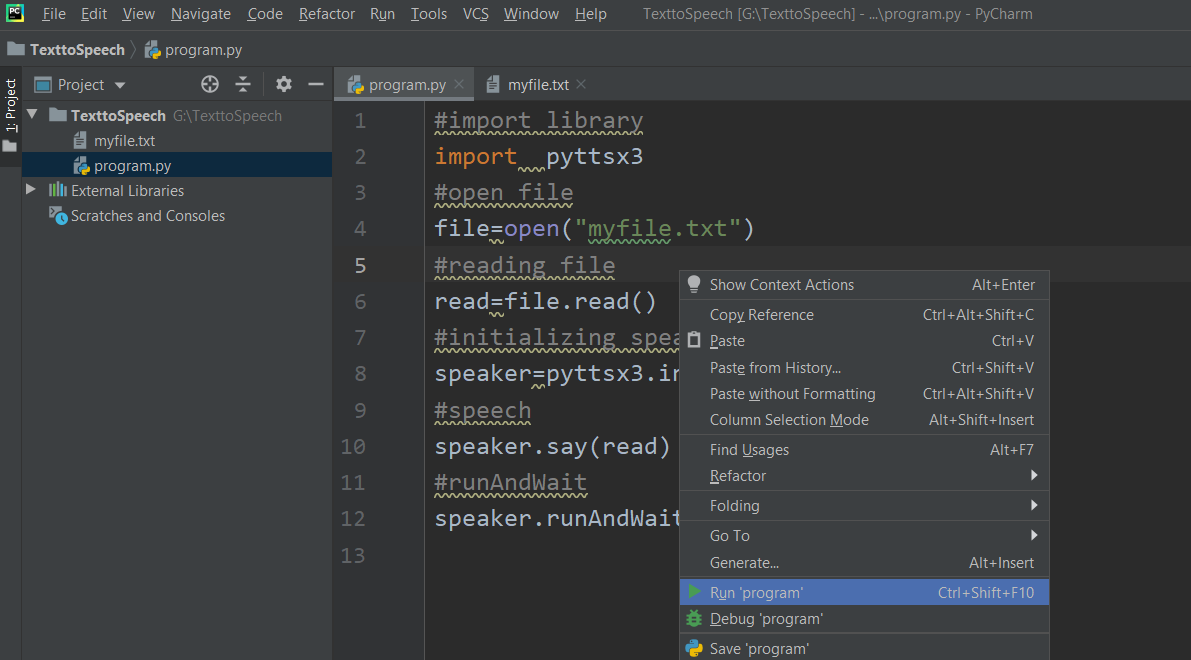

To change the pitch of the speech, we can use the setProperty() method with the parameter 'pitch' and a value between 0 and 1. This can be useful in creating more natural-sounding speech or for adding emphasis to certain parts of the text. Pyttsx3 provides the ability to change the pitch of the speech using the setProperty() method of the engine object.
PYTHON TEXT TO VOICE CODE
The above code changes the voice to Zira, the setProperty() function takes the property name and the changing property id. So, the setProperty() function is used to set property based on a string. getProperty() function is used to get the property related to that string. The naming convention of the pyttsx3 functions is very convenient. Let’s change the Voice of the engine to Female Voice Named Zira. Also, stored the voices list from the engine.getProperty('voices') function. Now when we have understood the voice property. However, we can change the voice using the setProperty() method of the engine object.

Changing the Python Pyttsx3 TTS Voiceīy default, Pyttsx3 uses the voice installed on our system. These properties can be set using the setProperty() method of the engine object. Pyttsx3 provides the ability to customize various properties of the voice used for speech, such as the speaking rate, volume, and language.

This command will play the speech generated by the say() method. We can use the following command to play our speech: nAndWait() The runAndWait() method waits until the speech is complete before returning control to the program. We can use the runAndWait() method of the engine object to play the speech. In this example, we are converting the string “Hello World” into speech using the say() method.Īfter we have converted our text into speech, we need to play it. We can use the following command to convert our text into speech: engine.say("Hello World") The say() method takes a string as input, which is the text we want to convert into speech. Once we have created the engine object, we can use its say() method to convert our text into speech. We can create the object using the following command: engine = pyttsx3.init() This object will act as our text-to-speech engine. We can do this by using the following command: import pyttsx3Īfter importing the library, we need to create an object of the pyttsx3.init() class. We first need to import the pyttsx3 library in our Python code. Once installed, we can start using Pyttsx3 to build text to speech (TTS) applications in Python.
PYTHON TEXT TO VOICE INSTALL
Open a terminal or command prompt and type the following command: pip install pyttsx3 Install Python’s Pyttsx3 Libraryīefore we start, let’s install Pyttsx3 using pip, which is the most popular package manager for Python. Pyttsx3 is easy to use and provides a simple interface for controlling speech output, including pitch, volume, and rate. Pyttsx3 in Python is a wrapper for the eSpeak and Microsoft Speech API (SAPI) text-to-speech engines, which provide high-quality speech synthesis capabilities. It is a cross-platform library that supports various operating systems, including Windows, Linux, and macOS.

Pyttsx3 is a Python library that allows developers to create text to speech (TTS) applications in a simple and easy manner.


 0 kommentar(er)
0 kommentar(er)
